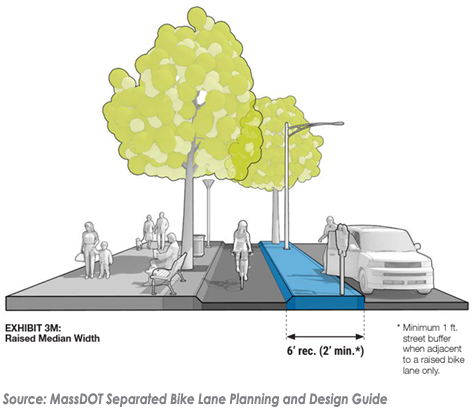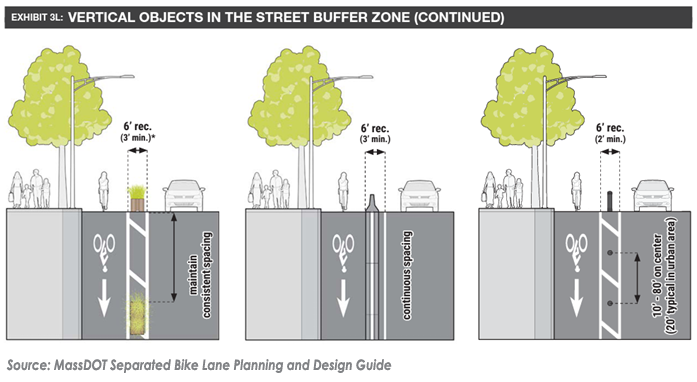Countywide Bikeways Facilities should deploy durable materials appropriate to the funding source. Treatments should be designed to prioritize the safety of people biking, walking, rolling, and using transit.
For major capital projects on the Countywide Bikeways Network, streetscape elements should utilize the most durable materials possible, like concrete buffers or if possible, raised bike lanes. These buffers may include landscaping. Other projects may consider temporary, low-cost, or quick build-type buffer treatments. Designers should carefully consider maintenance and durability and prioritize successful and safe implementation. In most cases, critical design elements at bus stops and intersections should be implemented using durable, permanent materials.
Chapter 3 of the MassDOT Separated Bike Lane Planning and Design Guide provides detailed considerations on buffer materials, drainage patterns, and considerations for raised or street-grade bike lane buffer design. For intersections, Don’t Give Up on the Intersection from NACTO provides input on appropriate materials for different contexts.

MassDOT Chapter 3
In some cases where capital funding is limited, or a bikeway project is implemented with routine repaving, full concrete buffers and protected intersections may not be appropriate to the funding source and project scope. MassDOT guide provides a good overview of potential buffer treatments that can be implemented at lower cost and without changes to the curb line or drainage patterns. Low-cost or “quick build” treatments should generally be implemented as a phased approach to more robust permanent designs, or as a hybrid of low-cost and full concrete materials. For example, intersection and bus stop treatments can be prioritized for concrete elements, with lower-cost materials in the midblock segments where durability and vehicle encroachment are potentially less of a concern. Refer to the MassDOT guide for more detailed considerations based on curb uses, land use, and intersection characteristics.


